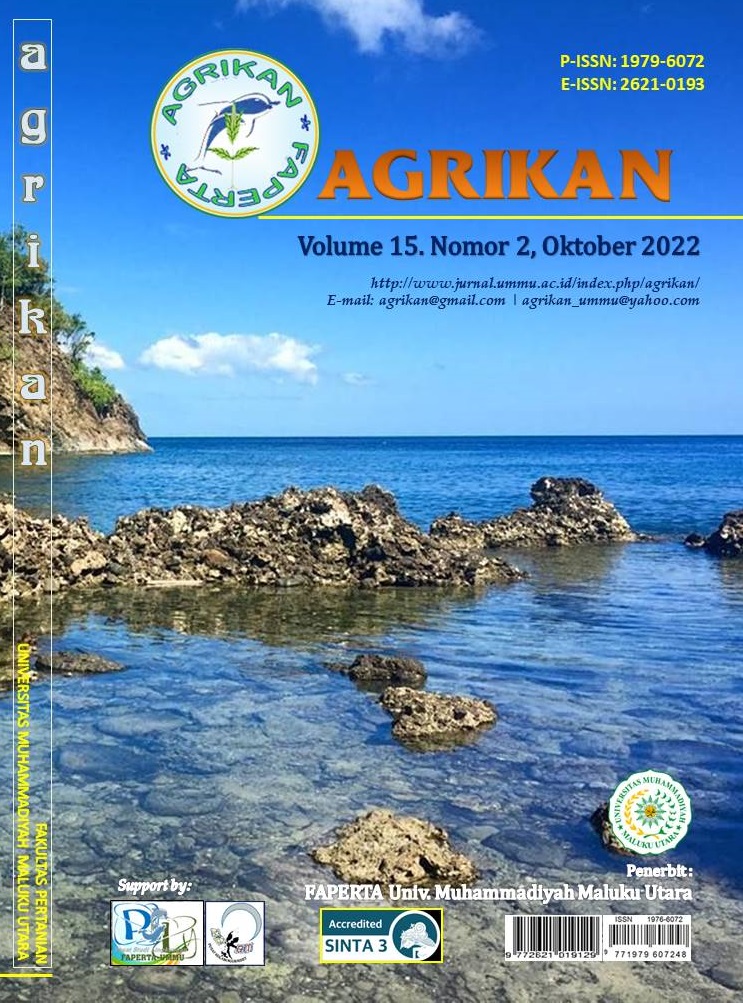Potential and Utilization of Cinnamon Logged Waste As Biopesticide
DOI:
https://doi.org/10.52046/agrikan.v15i2.1248Keywords:
Biopestisida, Nabati, Kayu ManisAbstract
One of the environmental problems has become a global issue, namely the excessive use of pesticides and fertilizers. The use of pesticides that are not in the right dose, inappropriate use, inappropriate benefits and not according to the rules of use can be a source of compounds and pollution containing heavy metals which are very difficult to degrade. Cinnamon biopesticide research will be carried out in several locations based on research activities. The collection of cinnamon samples will be carried out in the Research Field of the Faculty of Agriculture and the manufacture of a biopesticide solution will be carried out at the Forestry Laboratory, Faculty of Agriculture, Unkhair. To test the effectiveness of the biopesticide solution, it will be carried out in the Ake Malamo Watershed Management Center and Protected Forest (BPDAS HL) Nursery on mangrove/mangrove seedlings. The application of biopesticides is carried out by spraying all parts of the seeds with the appropriate concentration of treatment. Applications were carried out five times with an interval of once every 1 week. Observations were made every week, one day after the application of spraying. The use of fragrant cinnamon biopesticide which was sprayed on mangrove seedlings 5 ​​times 7 days after planting with a concentration of 75% each time was proven to suppress pests and diseases so as to increase their growth. This result is much better than the control/other treatments.
Downloads
Published
Issue
Section
License
Copyright (c) 2022 Asiah Salatalohy, Firlawanti Lestari Baguna

This work is licensed under a Creative Commons Attribution 4.0 International License.

This work is licensed under a Creative Commons Attribution 4.0 International License.













